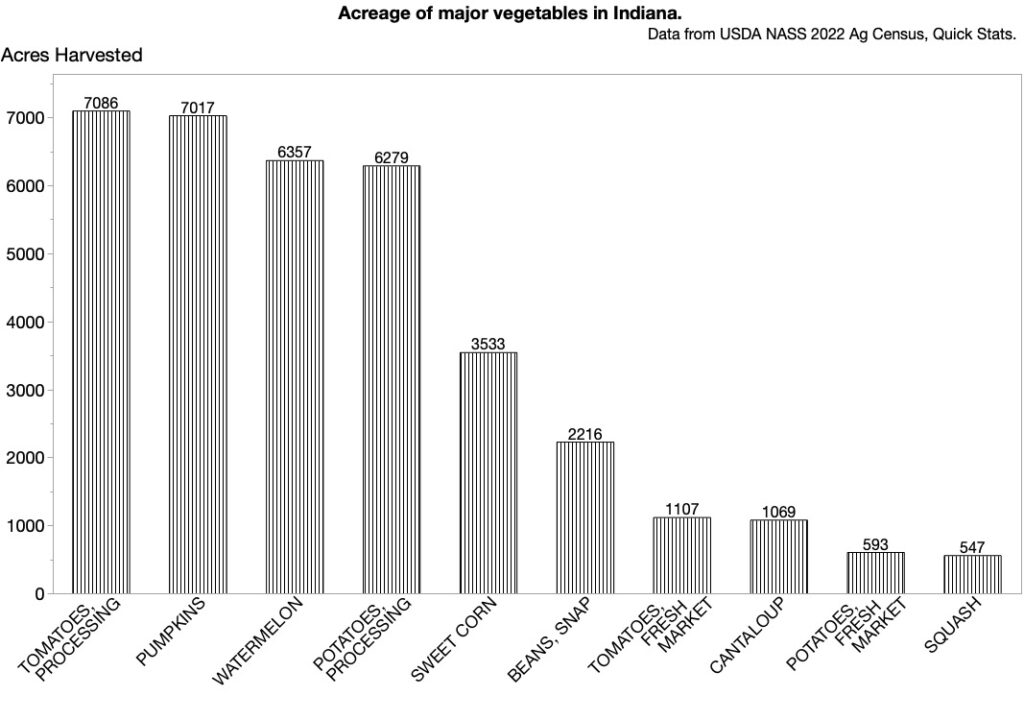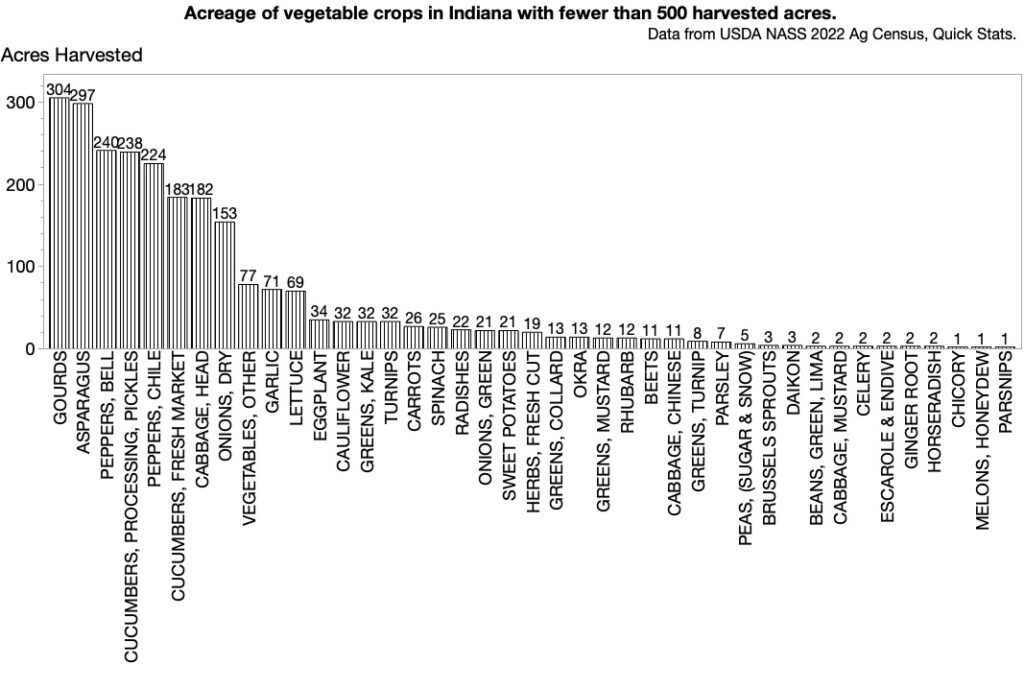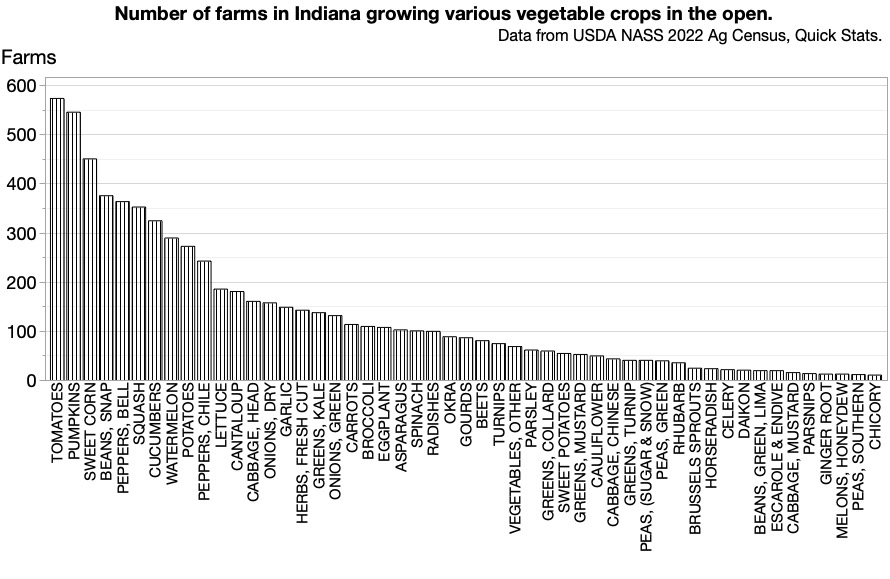The USDA 2022 Ag Census was released on February 13, 2024. What does it say about vegetable production in Indiana?
The number of farms growing vegetables for sale is 1,456, just 1.9% more than reported in the 2017 census. The acreage of vegetables harvested for sale is 38,483, a decrease of 4.1% from the 2017 census. Farms growing vegetables represent 2.7% of the total number of farms in Indiana, and vegetables are produced on about 1/4 of 1% of Indiana farm acreage.
Vegetable crops with more than 500 harvested acres reported in the census include processing tomatoes, with 7,086 acres, followed by pumpkins, watermelon, processing potatoes, sweet corn, snap beans, fresh market tomatoes, cantaloupe, fresh market potatoes, and squash (summer and winter) (Figure 1).
Forty-one other vegetable crops had at least 1 acre harvested in Indiana, according to the census (Figure 2). Gourds, asparagus, bell peppers, chile peppers, pickling, and fresh market cucumbers, cabbage, and onions, all were harvested from more than 100 acres. Garlic and lettuce were each harvested from about 70 acres. Eggplant was harvested from 34 acres, followed by cauliflower, kale, turnips, carrots, spinach, radishes, green onions, sweet potatoes, fresh herbs, collards, okra, mustard greens, rhubarb, beets, and Chinese cabbage, which were each harvested from at least 10 acres. Crops harvested from fewer than 10 acres included turnip greens, parsley, sugar and snow peas, Brussels sprouts, daikon radish, mustard cabbage, celery, escarole and endive, ginger root, horseradish, chicory, honeydew melons, and parsnips.
The census also reports the number of farms harvesting various vegetable crops. Tomatoes are grown in the open on 572 farms and pumpkins on 544 farms; more than a third of Indiana vegetable farms grow at least one of these crops (Figure 3). Sweet corn is harvested on 449 farms. Other crops harvested on at least 250 farms include snap beans, bell peppers, squash, cucumbers (either fresh market or processing), watermelon, and potatoes. Chile peppers are harvested on 241 farms, and other crops grown on at least 100 farms include lettuce, cantaloupe, cabbage, dry onions, garlic, fresh herbs, kale, green onions, carrots, broccoli, eggplant, and asparagus. Spinach and radishes are each grown on just under 100 farms; other crops grown on between 50 and 100 farms include okra, gourds, beets, turnips, parsley, collard greens, sweet potatoes, and mustard greens. Crops grown on fewer than 50 farms include cauliflower, Chinese cabbage, turnip greens, sugar and snow peas, green peas, rhubarb, Brussels sprouts, horseradish, celery, daikon, lima beans, escarole and endive, mustard cabbage, parsnips, ginger root, honeydew melons, southern peas, and chicory.
In the census, crops grown in high tunnels or greenhouses are tabulated separately from crops grown in the open. For Indiana, the census reports 260 operations growing tomatoes under cover, with 1,083,199 square feet (24.9 acres) in production. The total area of vegetables under cover was 1,597,001 square feet (36.7 acres), managed by 298 operations.
In summary, the 2022 Ag Census shows Indiana’s vegetable farm number (just under 1,500) and acreage (about 38,500) to be fairly stable over the last five years. Eight crops are produced on at least 500 acres each, and more than 40 more are produced on at least 1 acre total. More than 250 operations produce tomatoes under cover.
This just skims the surface of information available. The complete census for Indiana can be found at: https://www.nass.usda.gov/Publications/AgCensus/2022/Full_Report/Census_by_State/Indiana/index.php


